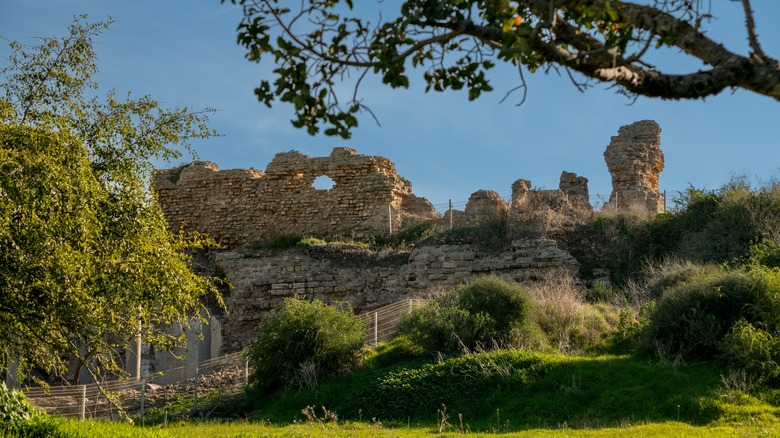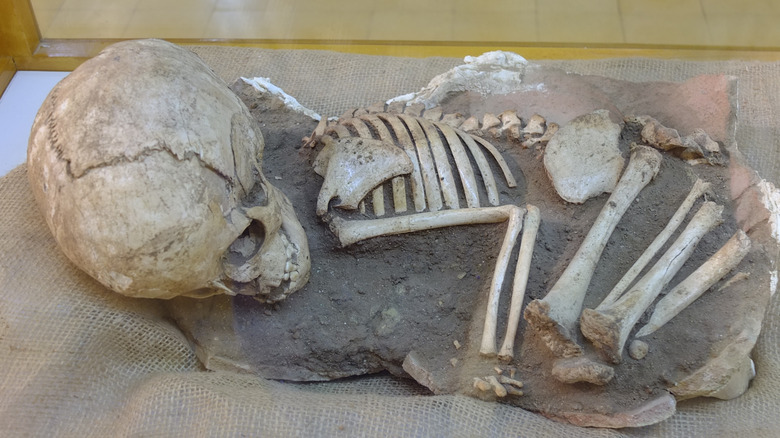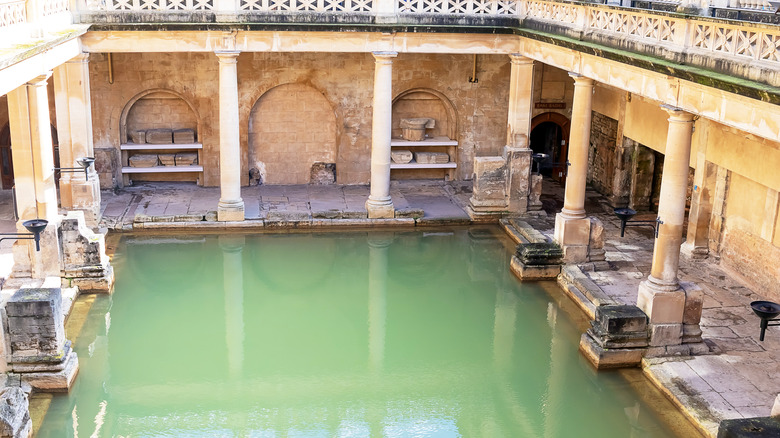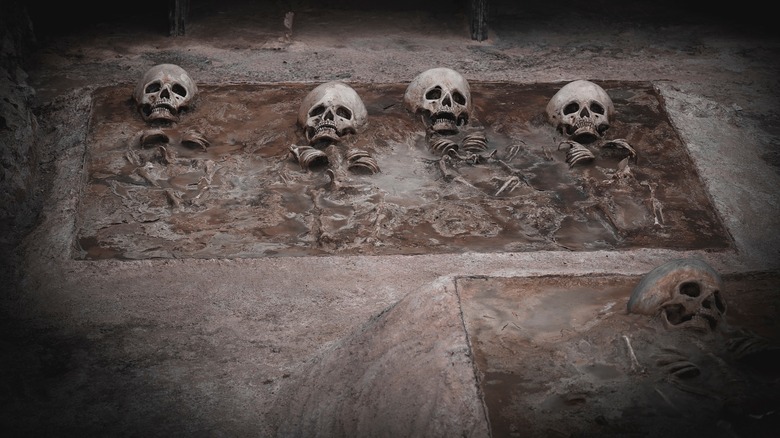An Archaeologist's Chilling Discovery Unearthed Multiple Infant Skeletons
The following article includes accounts of infanticide.
Behold the ancient Roman Empire. It has brought so many wonders to light. Countless hidden relics were uncovered after the once-powerful empire collapsed. There was the world-famous colosseum, a towering amphitheater known as the go-to venue for everything from gladiator games to theatrical performances to public executions. Then of course, there was the Arch of Septimius Severus, an architectural marvel that was once adorned in gilded bronze inscriptions, according to Architecture and Design.
Artnet News reports that recent digs of Rome have yielded antiquated coins, masterful pottery, bronze vessels, and a kind of ceramic storage system archeologists called "the Tupperware of antiquity." Surely, ancient Rome has left a lasting legacy of power, art, influence, and culture. But, as archeologists continue digging, it is clear that beneath the surface, ancient people had some rather disturbing secrets that stemmed from truly chilling practices emblematic of both the culture and the time (per History Daily). One of those secrets was literally buried, until now.
Archeologists unearthed more than 100 skeletons of infants in Ashkelon
According to History Daily, archaeologist Ross Voss was making his way through the sprawling sewer system of Ashkelon when he uncovered the spine-chilling skeletal remains of more than 100 infants. Ashkelon was an ancient seaport situated off the Mediterranean coast in Israel. To this very day, it maintains both religious and historical significance.
Bible Places reports that in 1985, Ashkelon, alternatively referred to as Ashqelon, became the first site in the "Holy Land" to undergo excavation. Since then, some truly fascinating finds have been unearthed there, such as a limestone slab adorned in Arabic script and the tails of a swallow, and an Islamic moat and stone glacis from the era when the city stood under Muslim rule and was subsequently called Ascalon (via the University of Chicago). Encyclopedia reports that during the height of Roman rule, Ashkelon remained a "free and allied city."
While examining the relics of a fourth-century ancient bathhouse on the city's shoreline, archeologist Voss was taken aback when he first discovered what he thought were tiny chicken bones. He later realized the alarming truth.
Infants were buried in the sewer surrounding the bathhouse
Careful analysis of the small skeletons revealed they were tiny humans, no more than a week old when they died per the website archeology. Mass burials of infants could have been the result of a widespread, highly contagious illness like The Plague; but in this instance, the newborn babies were found to be completely healthy. Anthropologist Patrician Smith was awestruck to learn that these presumably healthy babies died in droves. Was it possible that they were murdered, and if so, what was the most probable cause?
Archeologists examined the ancient bathhouse for clues. According to the Chicago Tribune, scrawled within the bathhouse was a Greek phrase that loosely translates to "Enter, Enjoy" in modern English. This phrase is believed to be a sign that one had entered a brothel. The unearthing of pieces of ceramic oil lamps, numbering into the hundreds, also points to the location being the site for carnal pleasures. Some had "erotic motifs" still visible, according to archeology.
One theory is that the people at the brothel were practicing infanticide
According to History Daily, all of the pieces of this puzzle led to a rather chilling revelation. There were 100 infant skeletons in the sewer at the site. One logical conclusion, then, was that the sex workers and their employers were engaging in a practice called infanticide, which NBC News describes as " the killing of unwanted babies" most specifically within one year of their conception. Based on evidence unearthed through archeological digs, it is now believed that infanticide was a widespread and socially accepted activity in some ancient cultures. There is, in fact, another site called "Hambelden" where the remains of approximately 97 infant skeletons were also excavated and appear to have died under similar circumstances.
We often associate infanticide with the killing of female infants at a time when girls were favored over boy children. However, according to archeology, the vast majority of infants found at this particular site were male. One theory stands that they were letting the little girls live so they could grow up to work in the brothel like their mothers, but nobody knows for sure.



